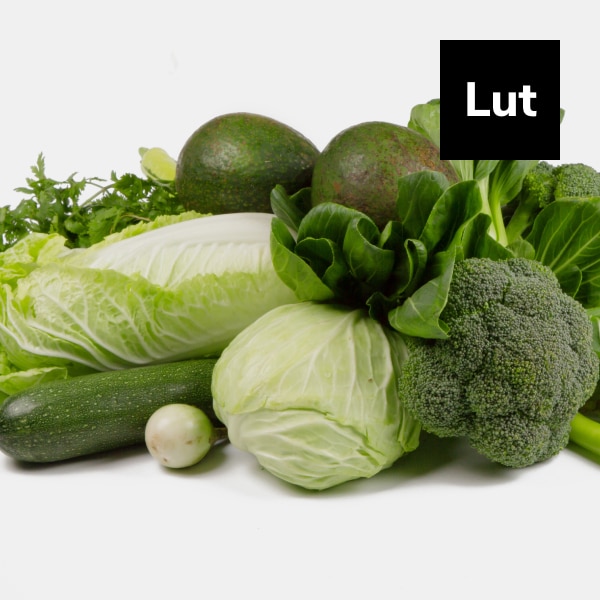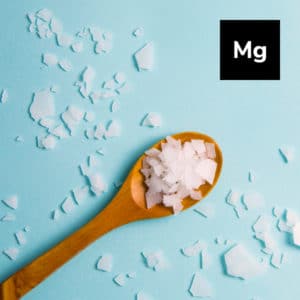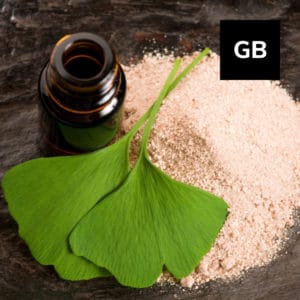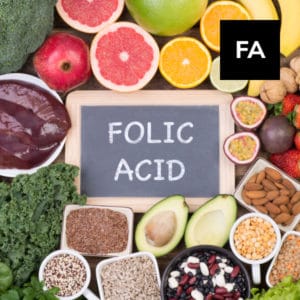Overview
Our eyes’ retina and macula are especially susceptible to oxidative damage caused by free radicals. The good news is that our eyes have built-in antioxidant protection. The retina is protected by yellow macular pigment that is made up of the carotenoids lutein and zeaxanthin, which work synergistically to protect our eyes.
Key Benefits
- Provides potent antioxidant protection
- Protects the eyes from age-related diseases
- Reduces risk of cardiovascular disease
- Protect the skin from UV damage
- Reduces inflammation
History of Usage
Based on the results of the 2013 nationwide landmark clinical trial called the Age-Related Eye Disease Study (AREDS), sponsored by the National Eye Institute (NEI), and other ongoing studies, we know that lutein and zeaxanthin, and other vitamins and antioxidants, help slow, stop, and reverse age-related macular degeneration (AMD) by 25%.
Approximately 20.5 million Americans aged 40 and older have cataracts, and more than half of all Americans develop cataracts by age 80. Numerous studies have shown that lutein and zeaxanthin supplementation helps to prevent and/or delay the progression of cataracts and other eye diseases.
Recent studies are indicating that intake of foods containing lutein and zeaxanthin during pregnancy and breastfeeding results in their deposition in the eye and brain during the baby’s development via the cord blood and breast milk. The presence of lutein and zeaxanthin in the macula during the early stages of life is critical, as children are particularly vulnerable to the potentially harmful effects of excessive light exposure (solar or artificial LED light) due to their immature eye development and the ocular lens’s complete transparency to light, which increases the risk of oxidative stress.
Biochemistry
Lutein and zeaxanthin are carotenoids with strong antioxidant protective effects for healthy eyes.
Carotenoids are the red, orange, and yellow plant pigments that give fruits and vegetables their jewel-like colors. Dark green veggies, such as spinach and kale, also contain carotenoids. The color is just covered up by the chlorophyll in the plant. We ingest between 30 and 50 carotenoids in our diet, and about 20 of these can be measured in our blood. One of the most interesting things about carotenoids is that they are organ-specific. Different carotenoids are concentrated in different organs, such as the skin. Of all the carotenoids that we consume, only lutein and zeaxanthin are found in the eye’s macula. The macula’s relative concentrations of lutein and zeaxanthin are distinct: zeaxanthin is more concentrated in the center, whereas lutein is more concentrated in the macula’s periphery.
Lutein and zeaxanthin are the only carotenoids found in the human lens and may help prevent cataracts by filtering damaging blue light and providing antioxidant support for healthy eyes. Additionally, they protect the body’s proteins, lipids, and DNA from stresses and aid in glutathione recycling.
Because lutein and zeaxanthin cannot be produced in humans, their levels in the blood and tissues are entirely dependent on food intake. However, because these carotenoids are not deemed necessary, there is currently no set dietary guideline intake for lutein.
However, studies on eye and brain health and function conducted in a young adult population show the benefits of 10 mg of lutein and 2 mg of zeaxanthin daily. Maternal supplementation with the same doses during the third trimester of pregnancy resulted in reduced oxidative stress in the newborn that is at high risk since antioxidant defense is deficient in newborns.
Recent Trends
Lutein and zeaxanthin supplements are usually sourced from Aztec marigold flowers (Tagetes erecta) and mixed with waxes, but can also be made synthetically. They are especially popular among seniors who are concerned about maintaining their eyesight and preventing age-related eye diseases.
The global carotenoids market was estimated to increase from $1.5 billion in 2019 to $2 billion by 2026, registering a 4.2 percent compound annual growth rate over the projected period. This is due to the growing usage of natural carotenoids as food coloring, advancements in the technology used to extract carotenoids, and the increasing use of lutein and zeaxanthin supplements for the prevention of age-related eye problems in seniors.
Supplements are sold as tablets, capsules, chewable, and gummies.
Precautions
There are no contraindications for taking lutein and zeaxanthin. The only side effect of excess lutein and zeaxanthin consumption is bronzing of the skin.
References
- Krinsky NI, Landrum JT, Bone RA. Biologic mechanisms of the protective role of lutein and zeaxanthin in the eye. Annu Rev Nutr. 2003;23:171-201. doi: 10.1146/annurev.nutr.23.011702.073307. Epub 2003 Feb 27. PMID: 12626691.
- Stahl W. Macular carotenoids: lutein and zeaxanthin. Dev Ophthalmol. 2005;38:70-88. doi: 10.1159/000082768. PMID: 15604618.
- Gazzolo D, Picone S, Gaiero A, Bellettato M, Montrone G, Riccobene F, Lista G, Pellegrini G. Early Pediatric Benefit of Lutein for Maturing Eyes and Brain-An Overview. Nutrients. 2021 Sep 17;13(9):3239. doi: 10.3390/nu13093239. PMID: 34579116; PMCID: PMC8468336.
- Christen WG, Liu S, Glynn RJ, Gaziano JM, Buring JE. Dietary carotenoids, vitamins C and E, and risk of cataract in women: a prospective study. Arch Ophthalmol. 2008 Jan;126(1):102-9. doi: 10.1001/archopht.126.1.102. PMID: 18195226; PMCID: PMC2396535.
- Gammone MA, Riccioni G, D’Orazio N. Carotenoids: potential allies of cardiovascular health?. Food Nutr Res. 2015;59:26762. Published 2015 Feb 6. doi:10.3402/fnr.v59.26762
- Osganian SK, Stampfer MJ, Rimm E, Spiegelman D, Manson JE, Willet WC. Dietary carotenoids and risk of coronary artery disease in women. Am J Clin Nutr. 2003;77:1390–9.
- Zou Z, Xu X, Huang Y, Xiao X, Ma L, Sun T, et al. High serum level of lutein may be protective against early ATS: the Beijing atherosclerosis study. Atherosclerosis. 2011;219:789–93.
- Dwyer JH, Navab M, Dwyer KM, Hassan K, Sun P, Shircore A, Hama-Levy S, Hough G, Wang X, Drake T, Merz CN, Fogelman AM. Oxygenated carotenoid lutein and progression of early atherosclerosis: the Los Angeles atherosclerosis study. Circulation. 2001 Jun 19;103(24):2922-7. doi: 10.1161/01.cir.103.24.2922. PMID: 11413081.
- Roberts RL, Green J, Lewis B. Lutein and zeaxanthin in eye and skin health. Clin Dermatol. 2009 Mar-Apr;27(2):195-201. doi: 10.1016/j.clindermatol.2008.01.011. PMID: 19168000.
- Bernstein PS, Li B, Vachali PP, et al. Lutein, zeaxanthin, and meso-zeaxanthin: The basic and clinical science underlying carotenoid-based nutritional interventions against ocular disease. Prog Retin Eye Res. 2016;50:34-66. doi:10.1016/j.preteyeres.2015.10.003
- Ma L, Dou HL, Wu YQ, Huang YM, Huang YB, Xu XR, Zou ZY, Lin XM. Lutein and zeaxanthin intake and the risk of age-related macular degeneration: a systematic review and meta-analysis. Br J Nutr. 2012 Feb;107(3):350-9. doi: 10.1017/S0007114511004260. Epub 2011 Sep 8. PMID: 21899805.
- Delcourt C, Carrière I, Delage M, Barberger-Gateau P, Schalch W; POLA Study Group. Plasma lutein and zeaxanthin and other carotenoids as modifiable risk factors for age-related maculopathy and cataract: the POLA Study. Invest Ophthalmol Vis Sci. 2006 Jun;47(6):2329-35. doi: 10.1167/iovs.05-1235. PMID: 16723441.
- Yang SF, Roberts JE, Liu QH, Pang J, Sarna T. Zeaxanthin and Lutein in the Management of Eye Diseases. J Ophthalmol. 2016;2016:4915916. doi:10.1155/2016/4915916
- “NIH study provides clarity on supplements for protection against blinding eye disease.” US National Eye Institute, National Institutes of Health, Bethesda, MD. 5 May 2013.
- The AREDS Formulation and Age-Related Macular Degeneration” US National Eye Institute, National Institutes of Health, Bethesda, MD. Nov 2011.




